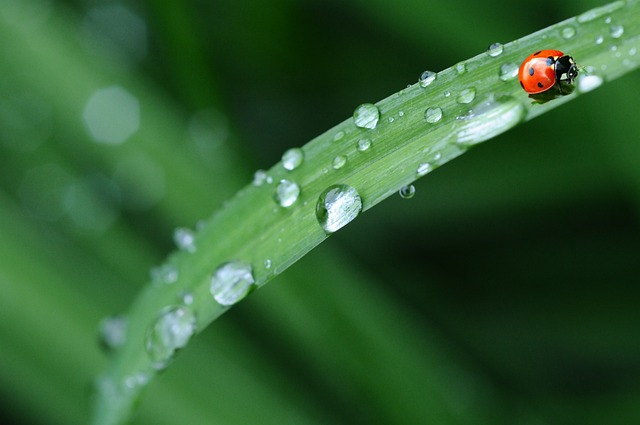End-of-lease pest inspections by professional services are crucial for maintaining property value and peace of mind. They employ advanced techniques to detect subtle signs of pests like termites, rodents, bed bugs, and ants, preventing costly damage and health risks. Both residential and commercial properties benefit from these thorough assessments, ensuring a smooth transition between tenancies and safeguarding investments against infestations.
In the realm of tenancy and property management, end-of-lease pest inspections are a game-changer. These meticulous checks provide both tenants and landlords with invaluable peace of mind, ensuring properties are free from unwanted visitors like rodents, termites, or bed bugs. A professional pest inspection service goes beyond mere visual assessments, employing advanced detection methods for comprehensive coverage. This article explores the significance of these inspections, what to expect, common pests, and the profound benefits for all stakeholders, from tenants to property owners.
Understanding the Importance of End-of-Lease Pest Inspections
End-of-lease pest inspections are a crucial step in maintaining tenant and landlord peace of mind. They offer a comprehensive assessment of a property’s current state, identifying any signs of pest infestations such as termites, rodents, bed bugs, or ants. These inspections are vital for several reasons. First, they help to mitigate potential damage caused by pests, which can be costly to repair. Second, they provide clear evidence of the property’s condition, protecting both parties from disputes over repairs and deposits at the end of the lease term.
Professional pest inspection services utilize advanced detection techniques, including visual inspections, dog scenting, and thermal imaging, to ensure accurate results. Commercial and home pest inspection experts are trained to identify subtle signs of infestation, such as small holes, chewed wiring, or peculiar smells, that might be missed by untrained eyes. Regular pest detection services can prevent the spread of pests and reduce the risk of health hazards associated with infestations.
What to Expect During a Professional Pest Inspection
During a professional pest inspection, tenants and landlords can expect a thorough assessment of their property. Expert inspectors are equipped to detect even the most subtle signs of various pests, from termites and rodents to bed bugs and ants. The process typically involves a meticulous walk-through of every room, focusing on potential entry points, hidden corners, and areas prone to infestations.
Inspectors use advanced tools and techniques for pest detection services, including thermal imaging cameras, moisture meters, and specialized equipment for ant and termite inspections. They carefully examine walls, floors, ceilings, and structural components for any damage or signs of pest activity. A comprehensive home pest inspection or commercial pest inspection will also include a review of previous infestations, treatment records, and recommendations for preventive measures to ensure long-term peace of mind.
Common Pests and Their Detection Methods
Pest infestations can go unnoticed for extended periods, leading to significant damage and costly repairs for both tenants and landlords. Therefore, a thorough end-of-lease pest inspection is crucial for maintaining property value and ensuring a smooth transition. Professional pest inspection services employ various methods to detect common pests like termites, rodents, bed bugs, and ants. Termite inspections often involve visual assessments and the use of moisture meters to identify potential entry points and signs of infestation. Rodent infestations are detected through evidence of gnawing, droppings, and tracks, with professionals also utilizing bait stations and traps for confirmation.
Bed bug inspections require a meticulous search for live bugs, shed skins, and blood spots on mattresses and furniture. Ant infestations can be identified by observing worker ants and noting their entry points, trails, or distinct ant nests. Advanced detection methods include thermal imaging to visualize hidden pests and petrin (dust) traps to capture insects without causing distress. These professional pest detection services are invaluable for both tenants, who want to avoid liability for damage caused by unseen infestations, and landlords, who require peace of mind regarding the condition of their properties between tenancies.
Benefits for Tenants and Landlords: Ensuring Peace of Mind
End-of-lease pest inspections offer a multitude of benefits for both tenants and landlords, fostering an environment of peace of mind. For tenants, knowing that their home or commercial space is free from unwanted pests like bed bugs, rodents, ants, and termites can significantly reduce stress and ensure a comfortable living experience. Professional pest inspection services provide detailed reports on any existing or potential issues, empowering tenants to take proactive measures and maintain their property in top condition.
Landlords, too, benefit immensely from these inspections. They safeguard against costly repairs and legal disputes by establishing a clear understanding of the property’s current state. Regular pest detection services can help identify and mitigate issues early on, preventing widespread infestations that could devalue properties. Termite inspection services, in particular, are crucial for protecting investments, as termites can cause substantial damage over time.
End-of-lease pest inspections are a crucial service that offers both tenants and landlords invaluable peace of mind. By engaging professional pest inspection teams, property owners can ensure their investment is protected against hidden infestations, be it termites, rodents, or bed bugs. These comprehensive assessments not only safeguard the property’s value but also provide a clear understanding of any existing issues, facilitating fair lease resolutions. For tenants, knowing their home or workplace is free from pests promotes a sense of security and well-being. Thus, incorporating regular pest inspections into lease agreements is a proactive step towards maintaining healthy living and working environments.
